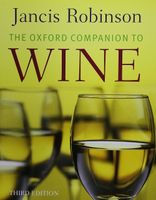Advertisement
Yields and wine quality
Published 2006
A necessary connection between low yields and high-quality wine has been assumed at least since Roman times when Bacchus amat colles encapsulated the prevailing belief that low-yielding hillside vineyards produced the best wine. Wine law in many European countries is predicated on the same belief and the much-imitated appellation contrôlée laws of France specify maximum permitted yields for each appellation (even if an additional allowance is often permitted; see below).
There is little doubt that heavily cropped vines with a low leaf to fruit ratio ripen more slowly, so that in cooler climates the fruit may not reach full ripeness and wine quality suffers. It is less widely understood that undercropping can also adversely affect wine quality. A high leaf to fruit ratio will certainly ripen grapes, but the shaded canopy microclimate will produce grapes high in potassium and ph and low in phenolics and flavour.


